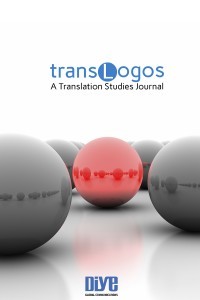An Analysis of the Turkish Translations of Jean Webster’s Daddy-Long-Legs from the Perspective of Systemic Affiliation
An Analysis of the Turkish Translations of Jean Webster’s Daddy-Long-Legs from the Perspective of Systemic Affiliation
The aim of this study is to analyze two Turkish translations of Jean Webster’s Daddy-Long-Legs (1912), which are Örümcek Dede (1973), translated by Esin Bürge, and Uzun Bacaklı Baba (2003), translated by Lütfiye Ekiz, in terms of their systemic affiliation to the children’s system. Zohar Shavit (1986) claims that due to the peripheral position of translated children’s literature in the literary polysystem, translators have the freedom to manipulate the texts. Contrary to adult’s books, manipulations are tolerated, and mostly required, to produce a translation that is deemed ‘good’ for child readers. In the present study, both target texts are examined in terms of their systemic affiliation, under the aspects of affiliation to existing models, the integrality of the text, the level of complexity of the text, ideological or evaluative adaptation, and stylistic norms. Since “the relationship between text and image” (Alvstad 2010) is an important feature of the children’s literature, illustrations in the translated texts are also analyzed. Gideon Toury’s “operational norms” (2012) are used as a methodological tool to investigate the manipulations in the two target texts. The results of the analysis have shown that Örümcek Dede was subjected to manipulation, and systemic affiliation was ensured via omissions, additions, and changes of the illustrations. On the other hand, Uzun Bacaklı Baba is affiliated to the target system only in terms of enriching children’s vocabulary and serving the didactic function. It is also considered that target audience was specified as children for Örümcek Dede, while Uzun Bacaklı Baba addresses children and young adults. Thus, it can be concluded that what is considered to be ‘good’ or ‘appropriate’ for children might vary for different target audiences.
Keywords:
translated children’s literature, systemic affiliation, manipulation Jean Webster, Daddy-Long-Legs,
___
- Alimen, Nilüfer. 2015. “Bir Yönlendirme Aracı Olarak Çeviri: Serteller ve Çeviri Çocuk Edebiyatı.” [Translation as a tool of manipulation: Sertels and translated children’s literature.] PhD diss., Yıldız Technical University.
- Alvstad, Cecilia. 2010. “Children’s Literature and Translation.” In Handbook of Translation Studies, edited by Yves Gambier and Luc van Doorslaer, 1:22–27. Amsterdam: John Benjamins.
- Galton, Francis. 1904. “Eugenics: Its Definition, Scope, and Aims.” American Journal of Sociology 10 (1): 1–25. https://www.jstor.org/stable/2762125.
- Hunt, Peter. 2011. “Children’s Literature.” In Keywords for Children’s Literature, edited by Philip Nel and Lissa Paul, 42–47. New York: New York University Press.
- Kalaycıoğlu, Esra. 2021. “A Descriptive and Comparative Study on the Turkish Translations of Jean Webster’s Daddy-Long-Legs.” Master’s thesis, Istanbul 29 Mayıs University.
- Karadağ, Ayşe Banu. 2018. “Çeviri Çocuk Edebiyatı Bağlamında Asimetrik Güç İlişkileri: Yetişkin Çevirmenler ve Çocuk Okurlar.” [Asymmetrical power relations within the context of translated children’s literature: Adult translators and child readers.] In Çeviribilimde Güncel Tartışmalardan Kavramsal Sorgulamalara [From recent discussions to conceptual reflections in Translation Studies], edited by Seda Taş, 43–78. Istanbul: Hiperyayın.
- Keely, Karen A. 1999. “The Pure Products of America: Eugenics and Narrative in the Age of Sterilization.” PhD diss., University of California.
- Keely, Karen A. 2004. “Teaching Eugenics to Children: Heredity and Reform in Jean Webster’s Daddy-Long-Legs and Dear Enemy.” The Lion and the Unicorn 28 (3): 363–389. doi:10.1353/uni.2004.0032.
- Lathey, Gillian. 2011. “The Translation of Literature for Children.” In The Oxford Handbook of Translation Studies, edited by Kirsten Malmkjær and Kevin Windle, 199–213. The United States: Oxford University Press.
- Lesnik-Oberstein, Karín. 1996. “Defining Children’s Literature and Childhood.” In International Companian Encyclopedia of Children’s Literature, edited by Peter Hunt, 15–29. London: Routledge.
- Neydim, Necdet. 2005. “Küçük Prens Çevirilerindeki Çevirmen Kararlarına Erek Odaklı Bakışla Karşılaştırmalı Bir İnceleme.” [A comparative analysis on the translator decisions in the translations of The Little Prince through a target-oriented approach.] Alman Dili ve Edebiyatı Dergisi, no. 17, 99–110. https://dergipark.org.tr/en/download/article-file/10976.
- Nodelman, Perry. 2008. The Hidden Adult: Defining Children’s Literature. Baltimore: The John Hopkins University Press.
- Oittinen, Riitta. 2002. Translating for Children. New York: Garland.
- O’Sullivan, Emer. 2005. Comparative Children’s Literature. London: Routledge.
- O’Sullivan, Emer. 2010. Historical Dictionary of Children’s Literature. The United States of America: The Scarecrow Press.
- Phillips, Anne K. 1999. “‘Yours Most Loquaciously’: Voice in Jean Webster’s Daddy-Long-Legs.” Children’s Literature 27:64–86. doi:10.1353/chl.0.0124.
- Puurtinen, Tiina. 1998. “Syntax, Readability and Ideology in Children’s Literature.” Meta 43 (4): 524–533. doi:10.7202/003879ar.
- Reynolds, Kimberley. 2011. Children’s Literature: A Very Short Introduction. The United States: Oxford University Press.
- Shavit, Zohar. 1986. Poetics of Children’s Literature. Athens: The University of Georgia Press.
- Thornton, Annette. 2015. “Jane and Jerusha: Finding a Voice on the Musical Stage.” Studies in Musical Theatre 9 (1): 71–84. doi:10.1386/smt.9.1.71_1.
- Toury, Gideon. 2012. Descriptive Translation Studies — and Beyond. 2nd expanded ed. Amsterdam: John Benjamins.
- Webster, Jean. 1912. Daddy-Long-Legs. New York: Curtis.
- Webster, Jean. 1973. Örümcek Dede. Translated by Esin Bürge. Istanbul: Milliyet.
- Webster, Jean. 2003. Uzun Bacaklı Baba. Translated by Lütfiye Ekiz. Ankara: Ütopya.
- Yayın Aralığı: Yılda 2 Sayı
- Başlangıç: 2018
- Yayıncı: Diye Yayınları
Sayıdaki Diğer Makaleler
Nilüfer ALİMEN, Esra KALAYCIOĞLU
Jason Goodwin’s ‘Possible Worlds’ Unveiled in Translation (Studies)
Merve AVŞAROĞLU, Ayşe Banu KARADAG
Translation and Localization: Frequent Arguments through Asymmetric Binoculars
An Analysis of the Paratext in Graham Sanders’s Six Records of a Life Adrift: Features and Functions
Delving into the ‘Stressful’ Work of Scientific Translators in South América
